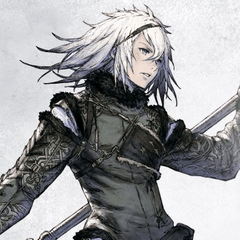How to paint water in Clip Studio Paint
Hey everyone! In this tutorial we will learn how to draw water. It is really simple and for this you will only need a color palette according to the theme and basic brushes. We will also use some of the basic tools of Clip Studio Paint that will greatly facilitate the process and give a great finish to the drawing. Without further ado, let's begin!
Basic Form of Water
Step 1: On one layer draw the shape of the water. You can activate the “Border Effect” in the Layer Property for a fast and efficient result when shaping by filling with the base color.
Step 2: Now Lock that layer using the “Lock Transparent Pixels” option and draw some random outer edges on it.
Step 3: Continue drawing until you are satisfied with the shape of your water.
Step 4: Now, with the “Soft Eraser” at a low opacity, erase some parts to make them transparent.
Step 5: To finish, create a new layer in Blending Mode: Add (Glow) to add the light reflections. You can use the default glitter brushes in the “Decoration” sub tool for a better finishing effect. And ready!
Underwater Effect
Now you will learn how to draw underwater effect.
Step 1: First we create our base: the water and the sandy bottom. We will only be using flat colors in this step. The mid tones are perfect, nothing saturated. Notice that the light that penetrates from the surface makes the water look lighter compared to the rest. Because of the depth, you can see that the bottom fades into the horizon too.
I will also include an object to demonstrate how light and shadows work under water. Let's clip that layer to the one below. You can see the sunlight reflecting off the top of the object (1), followed by a bit of shadow (2), and finally the light from the bottom reflecting off the bottom of the sphere (3).
Step 2: Now, we add curved shapes that represent the light hitting the surface of the water. The water is like a lens which in turn reflects those curves in the bottom and objects. To do this we create three new layers, one for the light from the surface (2), the light that reflects off the object (1), and the other for the bottom(3). The layers should be in Blending Mode: Add (Glow) for a better light effect. Use a light yellowish color to draw the light. Now lower the Opacity; I lowered it between 20 and 40 opacity.
For a better effect you can use the CSP filter called “Distort”. First select the layer of the light curves that you will edit; then go to the top menu (1), select “Filter” followed by “Distort” and finally “Ripple”. Try different settings (2) until you are satisfied with the result of your curves.
Step 3: It's time to add the shadows. Nothing complicated. You just have to create a new layer in Blending Mode: Multiply, lower its opacity a bit and draw the shadow shape corresponding to the object. And done! For a better effect you can blur the edges a bit. The basic blur brush from CSP will suffice.
Step 4: Now let's add the surface of the water. Let's draw on a new layer the sky and some clouds (1). Then, in another new layer, we draw the sunlight reflected on the surface (2). For a better effect, this last layer will use the Blending Mode: Add (Glow).
Step 5: When an object is in the water and close to the surface, its reflection can be seen. Kind of like a mirror! To achieve this we will use the “Finger Tip” tool. Draw on a new layer the reflection of the object (1). Then go to the Blending sub tool and select “Finger Tip” (2) Now give a few simple touches to the reflection to give it a “wave” effect or curves. Once done, lower the opacity a bit (3) and you're good to go.
Step 6: Now it only remains to add the final details like the light passing through the water and some bubbles.
All done! The Underwater Effect in six simple steps!
And that would be all you need to know to draw water.
To finish, I will leave you the link of some materials and brushes in Clip Studio Assets that can help you if what you want is to create a scene in the sea. They are really useful!
Thanks for watching my tutorial and I hope it helped you!
Note: All the drawings presented in this post are mine
My socials:
https://www.instagram.com/lucinamoon_arts/























Comment